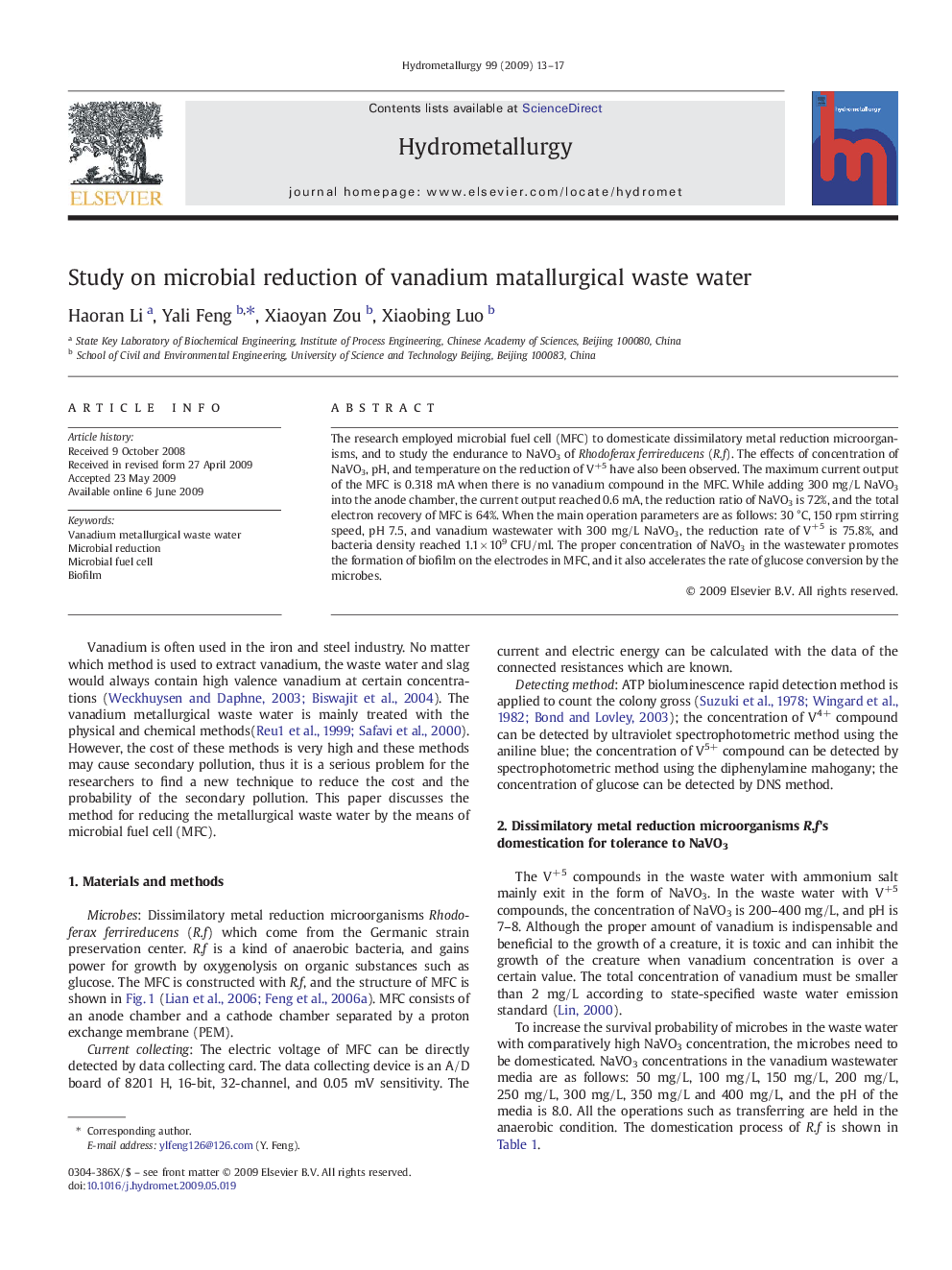| Article ID | Journal | Published Year | Pages | File Type |
|---|---|---|---|---|
| 212990 | Hydrometallurgy | 2009 | 5 Pages |
The research employed microbial fuel cell (MFC) to domesticate dissimilatory metal reduction microorganisms, and to study the endurance to NaVO3 of Rhodoferax ferrireducens (R.f). The effects of concentration of NaVO3, pH, and temperature on the reduction of V+5 have also been observed. The maximum current output of the MFC is 0.318 mA when there is no vanadium compound in the MFC. While adding 300 mg/L NaVO3 into the anode chamber, the current output reached 0.6 mA, the reduction ratio of NaVO3 is 72%, and the total electron recovery of MFC is 64%. When the main operation parameters are as follows: 30 °C, 150 rpm stirring speed, pH 7.5, and vanadium wastewater with 300 mg/L NaVO3, the reduction rate of V+5 is 75.8%, and bacteria density reached 1.1 × 109 CFU/ml. The proper concentration of NaVO3 in the wastewater promotes the formation of biofilm on the electrodes in MFC, and it also accelerates the rate of glucose conversion by the microbes.
